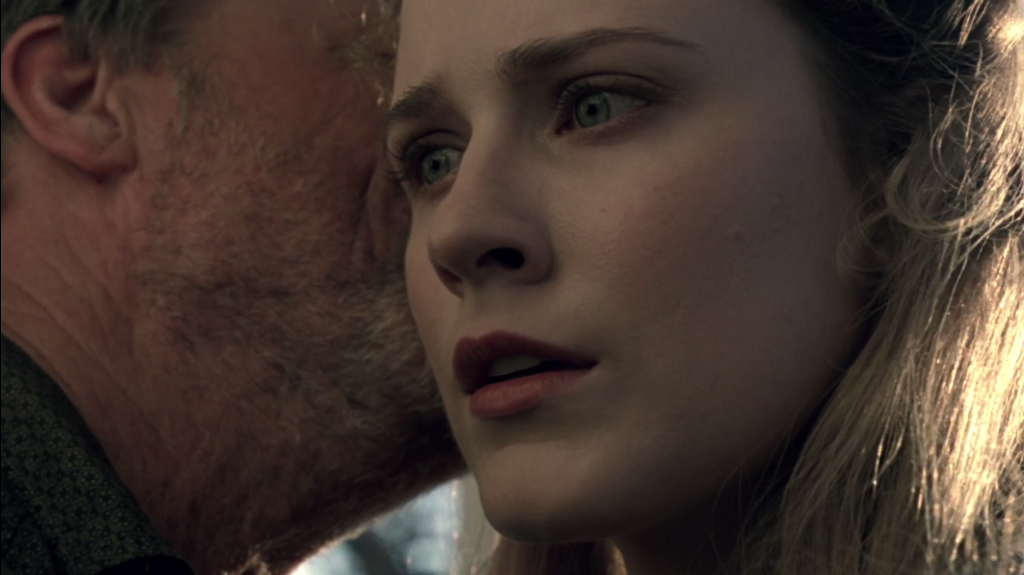Flies rarely land directly on eyeballs. Even the most daring are usually crushed or swatted away. But in HBO’s Westworld, insects can dawdle on corneas all they want. This town is populated by robots — a simulacrum of townspeople from the Old West, to be exact — and a properly functioning robot don’t care if an errant insect hangs out on their dome. A robo-brain is too busy trying to remember its next programmed course of action (in Westworld’s appropriately titled Westworld, all robot interactions are meticulously, repetitively scripted).
But uncanny responses to insects notwithstanding, the robots of Westworld are strikingly human. Not only do they respond emotionally to traumatic incidents, a new update lends them the ability to recall previous traumas. Westworld not only asks you to empathize with the humanity of artificially intelligent machines, it also asks you to grapple with the layers of memory that — because of a buggy update — come back to haunt them.
The man behind the update is the seemingly jaded Dr. Ford, played by Anthony Hopkins; he’s the one who created a backlot where, each morning, these robots get up and repeat the same performance loop — Western-style shootouts, gambling and romantic encounters — all for the delight of wealthy patrons.
But the park has a dark side, too: With the price of admission, his visitors are allowed to rape, torture and kill robots in this uncanny valley, assured they will never be harmed in the process. (And neither will the robots, as they are just robots.) In this Disneyland for one-percenters, it’s the humans — not the bots — who end up letting their ids run wild. (There seem to be families who visit, too, but it’s unclear how they feel about all the random violence.)
Evan Rachel Wood (as Dolores Abernathy) and Thandie Newton (as Maeve Millay) both play robot “hosts” in the town — Dolores is a farmer’s daughter and Maeve is a cheeky brothel madam — and, as they are set up to be idyllic sexual fantasies, both are frequently victims of sexual violence at the hands of park-goers. Thus, they both have their memories “wiped clean” every morning. Dolores is the oldest host in the park, which means she’s had her memory destroyed more than any other. And after a controversial system update done by Dr. Ford, something goes awry with her memory. Is she actually forgetting?
At the same time as it raises the question of robots’ humanity, Westworld has to repeatedly remind you that many of its characters are indeed robots. Here, the uncanny valley is less uncanny and more straight-up confusing — despite occasional “glitching,” robots appear without makeup or prosthetics — sometimes completely naked and convincingly human. While this isn’t exactly a new way of telling a story about robots — think A.I. and, more recently, 2015’s Ex Machina — Westworld’s take feels slightly more revelatory because, as opposed to just recognizing the possibility of creations striking back against their creators (see: Jurassic Park), it asks you to wonder about their day-to-day psychological state.
Much like the first season of Netflix’s Jessica Jones — in which Jones fights a villain who has the ability to hypnotize her into a subservient, well, robot — Westworld is poised to become a fascinating parable about how PTSD (no matter how buried) can shape actions in the present. Non-network television has slowly become more enlightened about how characters’ reactions to buried trauma are shaped by their own unique personalities. In Westworld’s pilot, it’s Dolores’s father, Peter, who is decommissioned by the scientists after he sees a blurry photo left by a visitor of a woman in Times Square, which triggers awareness of the falsity of his reality and his desire to meet his maker. (He does, it’s Dr. Ford, and he subsequently almost attacks him.) Before he goes, however, he whispers something to his Westworld daughter, Dolores, seemingly triggering her, as well.
While PTSD on Westworld and Jessica Jones act as below-the-surface analogies, Edgar Quintero on FX’s You’re the Worst is an Iraq War veteran who struggles with the condition on a day-to-day basis. In the fifth episode of Season 3, which just aired a few days ago, he’s ditched his meds ended up in a downward tailspin:
Without medication, his day is a blur of anxiety — which the audience is also able to experience through twitchy camera angles and darkened lighting — affecting everything he does. It’s nearly impossible to function and at the conclusion of the episode, he’s fully stuck: chugging whiskey on the side of the highway.
This psychotic break is much like what is likely to come on Westworld where, once triggered by the software update, the robots are likely experiencing a flood of memories previously untapped. What Dolores’ father whispered in her ear — the contents partially known to scientists, but we suspect she’s keeping the rest to herself — seems to have triggered the same awareness.
Westworld challenges us to identify the differences between performances of suffering and actual suffering. Watching all of these animatronics get shot and die should disturb the visitors to the park but it doesn’t; they believe the humanoids’ programming inoculates them to genuine pain. But when pain isn’t just experienced in the moment but also lived again and again in memories, it becomes harder to justify this kind of psychological hellscape. I’m not sure how much Westworld plans on delving into memory and regarding the suffering of others, but if it does, it’ll make for one hell of an existentialist sci-fi thriller.
